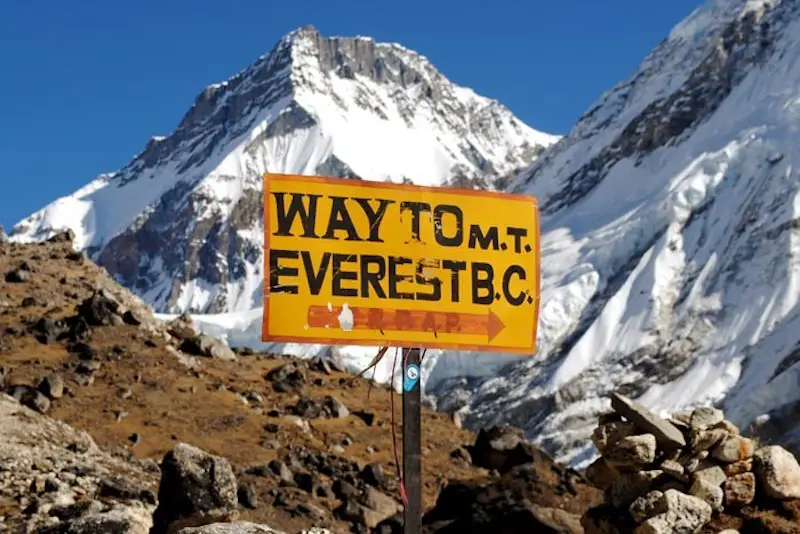Last we I shared the news that the Everest Icefall Doctors were already in Base Camp in Nepal to begin setting up the route through the Khumbu Icefall. It looks like they won’t be alone on the mountain for two long however, as The Himalayan Times reports that Sherpa support teams are now trekking to BC in preparation for the arrival of the climbers.
In the previous update it was noted that the Icefall Docs had begun installing ropes and ladders that allow climbers to make their way up to Camp 1 and Camp 2. The six man team, which consists of Ang Kami Sherpa, Ang Sarki Sherpa, Mingma Temba Sherpa, Dawa Jangbu Sherpa, Dawa Nuru Sherpa, Pasang Tshering Sherpa, Nima Ongchu Sherpa, and Ngawang Paljor Sherpa, continue to make progress but haven’t completed the route just yet. They hope to have the route completely open when foreign climbers begin to arrive in Base Camp in a few weeks time. Those same men will stay on Everest for up to three months, maintaining and repairing the route as needed.
While the Icefall Docs go about their work, the support staff for the various climbing teams is now making its way up the Khumbu Valley. Traditionally, that trek takes visitors a week to ten days to complete, but many of these staff members are already acclimated to the altitude and travel at a faster pace. That means they’ll start to arrive in BC over the next few days and will immediately go to work getting ready for their clients to begin arriving
The first order of business is to stake out a good location for their campsite. There is plenty of room in BC for everyone, but many of the teams have a preferred spot where they like to operate. Some prefer to be higher up the hill and closer to the icefall, which cuts down on time traveling through the camps of other teams on their way up and down the mountain. Others prefer to be further down and away from the hustle and bustle that comes with the construction of the tent city each year.
After the support team picks out its location, they’ll start setting up the tents, assign climbers to their own shelters. They’ll also establish the common areas, which usually include a kitchen tent, a dining tent, and a tent where the climbers can hang out, relax, interact with one another, and even get on wifi to check email and send notes back home. That Internet connection isn’t especially fast, but it does provide a bit of a lifeline for staying in touch with what’s happening in the world.
Over the next week or so, Everest South Side Base Camp is about to go from a relatively quiet and deserted place, to a bustling small town. The support teams will stay on the mountain until mid-May or so, depending on how soon the climbers summit. That means they are settling in for the long haul and getting ready for a very busy season ahead.
As usual, I’ll be keeping an eye on the proceedings on Everest and across the Himalaya. Things are only now just starting to ramp up, so expect the usual updates in the weeks ahead.
- Gear Review: The Xero Scrambler Mid is an Ultralight Hiking Shoe for Spring - March 1, 2023
- Gear Review: Yeti Roadie 48 Wheeled Cooler - August 18, 2022
- Kristin Harila Continues Pursuit of 8000-Meter Speed Record - August 16, 2022
